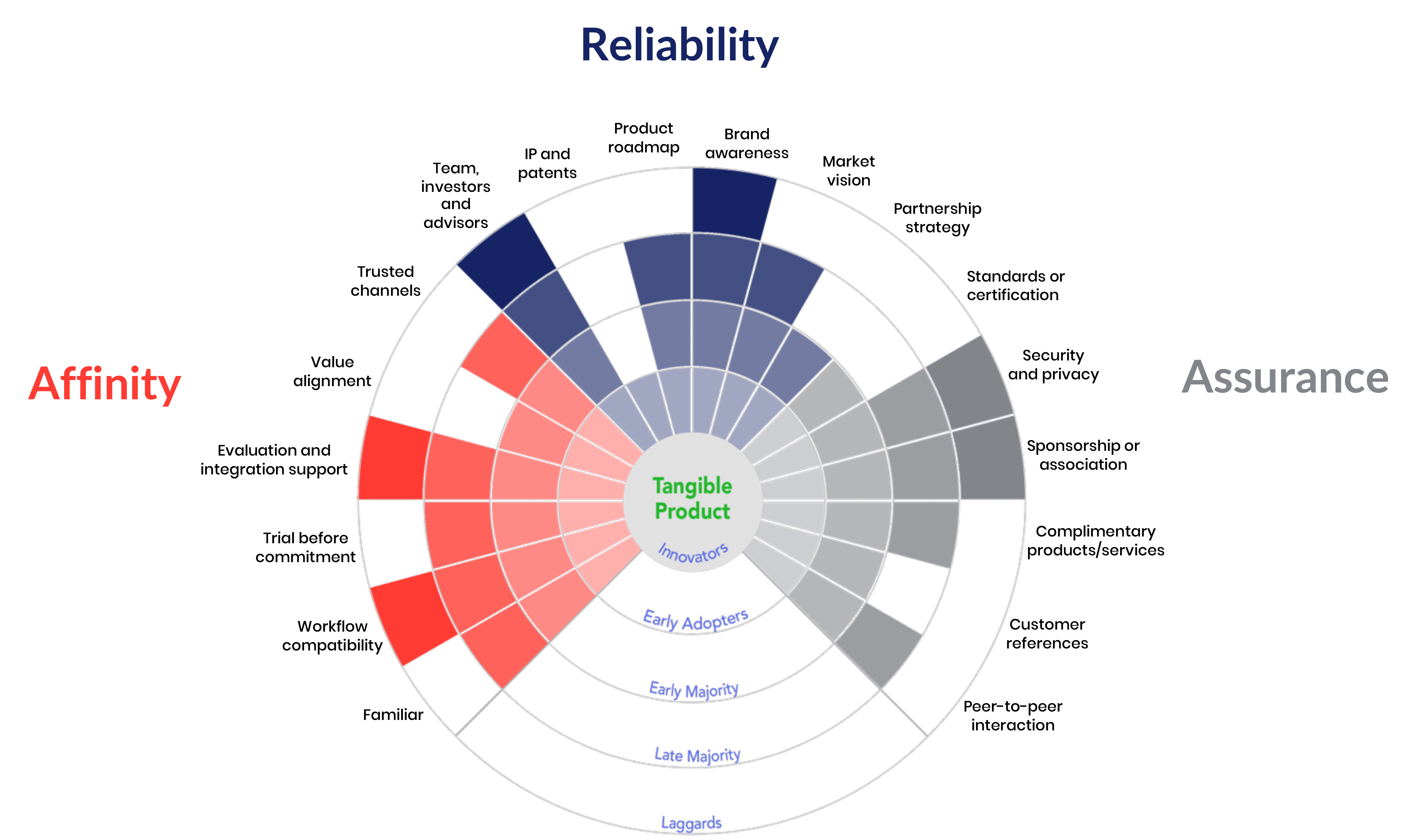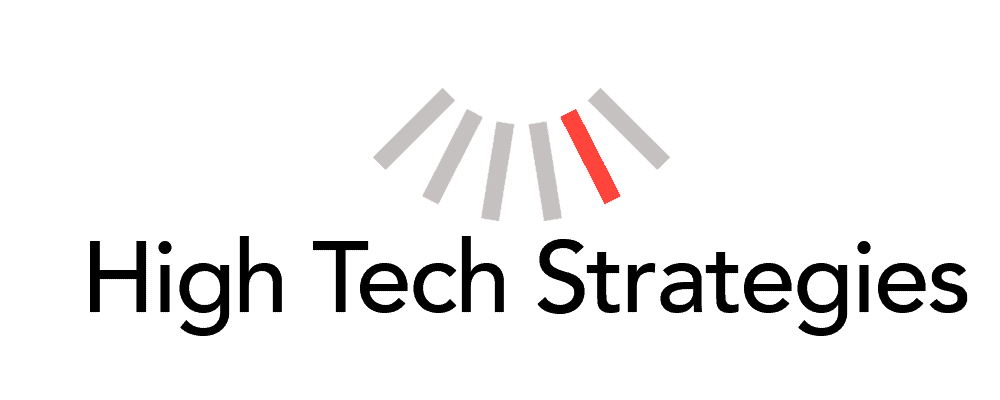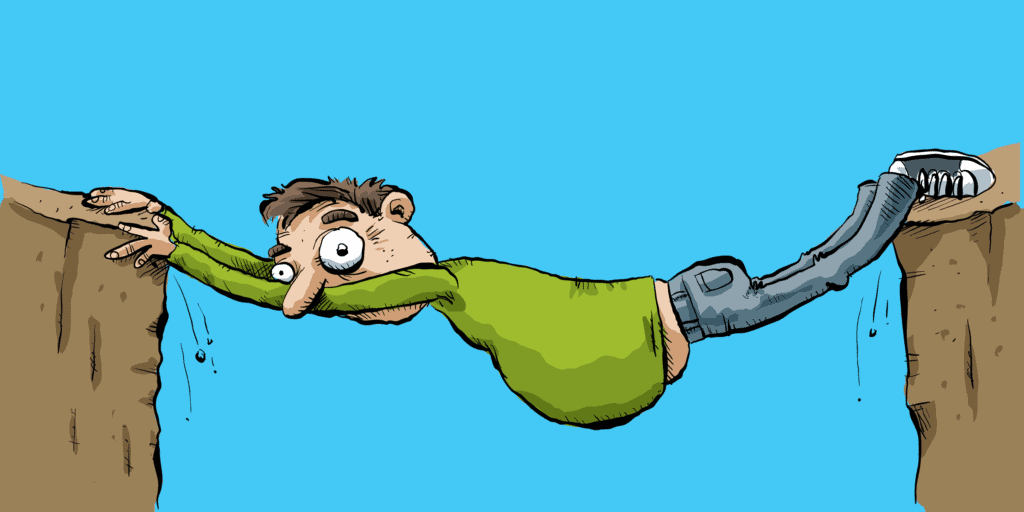We help high tech companies create remarkably valuable products the first time and every time. Our proven approach to high tech strategy development accelerates revenue growth and creates lasting competitive advantage.
Say goodbye to failed
products and innovations
All Successful High Tech Products Have Three Elements in Common

1.
AFFINITY
Seeing the world from the customer’s point of view, and creating a product that fits them so well, that it sells itself.
2.
RELIABILITY
Performing consistently well, in a trustworthy manner, to demonstrate the characteristics of an ideal partner.
3.
ASSURANCE
An independent infrastructure that allows people to interact with others they relate to, which increases confidence and reduces risk
Our analysis presented to AESP's Electric Vehicle Solutions Lab
Recently, the managing partner at High Tech Strategies analyzed the perception of risk held by potential buyers and users of electric vehicles. The results of his findings are contained in this article.

Why we are best-in-class
Our approach to high tech strategy development is based on a variety of proprietary models and frameworks, domain expertise, plus executive-management experience in both startups and fortune 500 companies. We may appear to be omniscient, but it’s only because we’ve been instrumental in the introduction and management of hundreds of successful products and innovations.
Predictable Results
Our approach to high tech strategy development aligns your entire organization around customer needs and characteristics, unlocking your company’s growth potential. All of our clients experience increases in market share, revenue and customer satisfaction, along with reductions in wasted time and expense. Our success rate is well documented.
Our Integrated Approach to
High Tech Strategy Development
Independent Insight
We immerse ourselves in your business, diving deeply into revenue drivers, sales cycle challenges, customer perceptions and your category’s position on the innovation-adoption lifecycle.
You will understand your customers, partners, and competitive position more deeply than ever before so you can make the right product and go-to-market decisions based on an “outside-in” perspective.


High Tech Strategy Development
Market dynamics change at every stage of the innovation-adoption lifecycle. Understanding this is essential to maintaining competitive advantage and ensuring sustainable growth.
We help organizations identify markets with the greatest opportunity, define the most valuable and competitive products, and deliver value in a systematic way throughout your organization.
Planning & Execution
Game-changing high tech strategies provide the foundation for success, but only if go-to-market execution directly reflects the strategy.
We help you implement your winning strategy by aligning all key business disciplines with the target customer. We do this through ongoing collaboration with our clients, resulting in plans they can embrace and execute with focus, alignment, and resolve.

For Leaders Who Are Ready To
Break Away From The Pack
We are for leaders who are unwilling to accept mediocre results, need a smarter strategy, and absolutely have to get it right the first time. Our clients come to us because trendy marketing techniques just aren’t working. We are for leaders who have created a meaningful innovation, who want to make a difference, create a movement – and ultimately make a lasting impact on the lives of their customers and employees.
Entrepreneurs
Independent thinkers who aren’t swayed by others yet need help creating a commercial success.
Change Makers
Forward-thinkers with a mission to solve an urgent problem yet struggle to make a difference because the mainstream won’t adopt.
Category Creators
Inspired founders who are following a consumer business model that doesn’t work with sophisticated B2B buyers.
Struggling Startups
Young companies that need to offer: a more complete product that appeals to more buyers and solves a more compelling problem.
Plateaued Pioneers
Companies that initially took off like a rocket but then stalled out because they ran out of early adopters to sell to.
Symptoms of Weak
High Tech Strategy
Strategy problems are inevitable for any high tech company. And the problems you will face are determined by market maturity and the stage of product adoption. These are the symptoms you will experience at some point in your journey.
Frequently Asked Questions

There is a massive difference between competing in an existing market, and creating your own new market. When you create your own market (or category), you are creating new demand rather than competing for existing demand. This is the reason “product market fit” produces mediocre results.
Successful founders introduce the world to something unique and different. The way they do that is by moving their thinking from the way the world is, to the way they want it to be. The greatest innovators teach the world to think differently with a fresh idea — either a new take on an old problem or by solving a whole new problem or by having a whole new idea.
The concept called product market fit traps entrepreneurs and inventors into thinking you must listen to customers who are only familiar with an existing category. Those customers will naturally ask for something better (a continuous innovation) rather than something different (a discontinuous innovation).
PMF is a formula that fails because the greatest potential for growth is in discontinuous innovations, and customers are often unable to talk about something they’ve never seen or used. Plus there is no “fit.” The new market category doesn’t exist yet.
In the late 1980s, a group of consultants working at Regis McKenna, Inc. (RMI) in the Pacific Northwest, recognized and described a gap in the innovation-adoption curve that was originally created by Everett Rogers. We called that gap the “marketing chasm.”
After using the chasm concept for several years, we introduced our “marketing chasm” framework and the theory behind it to author Geoffrey Moore. In the years to come, Moore popularized what has become known as Crossing the Chasm.
Despite trendy sayings such as “people buy your why” the scientifically-proven factor behind a purchase decision is…people want to feel safe.
The most basic instinct in human beings and the question the entire human body is asking every second of every day is: “Am I safe?”
85% of all people do not like taking chances and prefer to avoid risk in order to feel safe. This explains why the hidden element behind all successful products and innovations is the perception of low risk.
There are many reasons behind the ongoing epidemic of high-tech product failure, and they include factors such as: incomplete products, mismatched sales channels, and poor pricing practices.
But many of these factors can be corrected or realigned by taking a deeper look at the Technology Adoption Lifecycle (TALC) and using it correctly to assess your category’s position on the lifecycle curve.
The TALC describes the inescapable task of winning over a sequence of buyer types and emphasizes the need to avoid serving an entire market all at once. This misunderstanding of how new products are accepted and adopted in a marketplace is the leading cause of failure.
High Tech Strategy Insights
We provide insights and observations related to market strategy development, that you can use to jumpstart your projects and initiatives.







